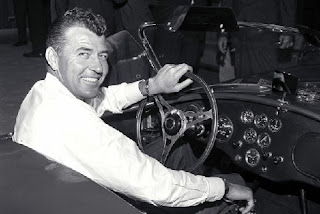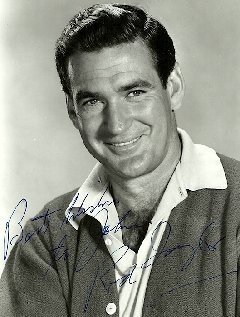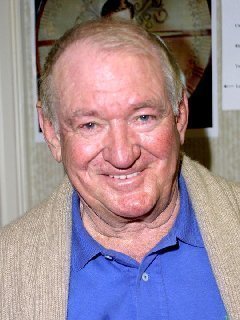Macaroni (/ˌmækəˈroʊni/, Italian: maccheroni) is dry pasta shaped like narrow tubes. Made with durum wheat, macaroni is commonly cut in short lengths; curved macaroni may be referred to as elbow macaroni. Some home machines can make macaroni shapes but, like most pasta, macaroni is usually made commercially by large-scale extrusion. The curved shape is created by different speeds of extrusion on opposite sides of the pasta tube as it comes out of the machine.
The word "macaroni" is often used synonymously with elbow-shaped macaroni, as it is the variety most often used in macaroni and cheese recipes. In Italy and other countries, the noun maccheroni can refer to straight, tubular, square-ended pasta corta ("short-length pasta") or to long pasta dishes, as in maccheroni alla chitarra and frittata di maccheroni, which are prepared with long pasta like spaghetti. In the United States, federal regulations define three different shapes of dried pasta, such as spaghetti, as a "macaroni product".
In Italian, maccheroni refers to elongated pasta, not necessarily in tubular form. This general meaning is still retained outside Rome and in different languages which borrowed the word. In Brazilian Portuguese, Estonian, Greek, Iranian, Russian, Ukrainian, and other Slavic languages, as well as Arabic, Turkish, Kazakh, Azerbaijani, Uzbek, Kyrgyz, and other Turkic languages and some Italian-American dialects the word was adapted as a generic term for all varieties of pasta.
Maccheroni comes from Italian maccheroni [makkeˈroːni], plural form of maccherone. The many varieties sometimes differ from each other because of the texture of each pasta: rigatoni and tortiglioni, for example, have ridges down their lengths, while chifferi, lumache, lumaconi, pipe, pipette, etc. refer to elbow-shaped pasta similar to macaroni in North American culture.
However, the product as well as the name derive from the ancient Greek "Macaria". The academic consensus supports that the word is derived from the Greek μακαρία (makaria), a kind of barley broth which was served to commemorate the dead. In turn, that comes from μάκαρες (makares) meaning "blessed dead", and ultimately from μακάριος (makarios), collateral of μάκαρ (makar) which means "blessed, happy".
However, the Italian linguist G. Alessio argues that the word can have two origins. The first is the Medieval Greek μακαρώνεια (makarōneia) "dirge" (stated in sec. XIII by James of Bulgaria), which would mean "funeral meal" and then "food to serve" during this office (see modern Eastern Thrace's μαχαρωνιά - macharōnia in the sense of "rice-based dish served at the funeral"), in which case, the term would be composed of the double root of μακάριος "blessed" and αἰωνίος (aiōnios), "eternally". The second is the Greek μακαρία "barley broth", which would have added the suffix -one.
In his book Delizia! The Epic History of Italians and their Food (2007), John Dickie instead says that the word macaroni, and its earlier variants like maccheroni, "comes from maccare, meaning to pound or crush."
The word first appears in English as makerouns in the 1390 Forme of Cury, which records the earliest recipe for macaroni and cheese. The word later came to be applied to overdressed dandies and was associated with foppish Italian fashions of dress and periwigs, as in the eighteenth-century British song "Yankee Doodle".
As is the case with dishes made with other types of pasta, macaroni and cheese is a popular dish and is often made with elbow macaroni. The same dish, known simply as macaroni cheese, is also found in Great Britain, where it originated. A sweet macaroni, known as macaroni pudding, containing milk and sugar (and rather similar to a rice pudding) was also popular with the British during the Victorian era. A popular canned variety is still manufactured by Ambrosia and sold in UK supermarkets.
In areas with large Chinese populations open to Western cultural influence such as Hong Kong, Macao, Malaysia and Singapore, the local Chinese have adopted macaroni as an ingredient for Chinese-style Western cuisine. In Hong Kong's cha chaan teng ("tea restaurants") and Southeast Asia's kopi tiam ("coffee shops"), macaroni is cooked in water and then rinsed to remove starch, and served in clear broth with ham or frankfurter sausages, peas, black mushrooms, and optionally eggs, reminiscent of noodle soup dishes. This is often a course for breakfast or light lunch fare. Macaroni has also been incorporated into Malay Malaysian cuisine, where it is stir-fried akin to mee goreng using Asian seasoning similar to said noodle dish (i.e. shallots, oyster sauce and chili paste). In the Philippines, it is a key ingredient in sopas, a semi-clear chicken broth often with chicken meat, pork, carrots, and other vegetables. A common variant uses milk, specifically evaporada.
- 1/2 pound elbow macaroni
- 1/2 cup milk
- 1 cup (about 1/2 pound) diced Cheddar cheese or cubed processed cheese spread (like Velveeta)
- 1/4 teaspoon dry mustard
- 1/4 teaspoon salt
- 1 1/2 cups frozen cocktail meatballs, thawed and cut in half
- Preheat oven to 350º. In a large pot of boiling water, cook macaroni until just tender, drain and place in a large bowl.
- Meanwhile, in a small saucepan, heat milk and cheese together over medium heat until cheese melts; stir in mustard and salt.
- Add meatballs and cheese mixture to macaroni, mix well. Place in a 2-quart casserole dish and bake for 20 to 25 minutes, or until heated through. Serve.
earthquake destroys parts of Sicily and Malta.
And births this date include....
1946 – Naomi Judd, American singer (The Judds) (d.2022)
National Milk Day on January 11th commemorates the day many think the first milk deliveries in glass bottles began in the United States. Alexander Campbell of the New York Dairy Company professed to the New York State Senate that his company was the first to make these deliveries in 1878.
The United States and Australia export more milk and milk products than any other country. Those products include cheese, yogurt, ice cream, butter, cream, powdered milk, and much more. Throughout the world, more than 6 billion people consume milk and the products we make from it. One of the reasons is because milk provides nutrients such as calcium, potassium, vitamin B12, and vitamin A.
Production History
During the Middle Ages, people called milk the virtuous white liquor because alcoholic beverages were more reliable than water. In 1863, French chemist and biologist Louis Pasteur made it possible for milk and other food and drinks to be stored for more extended periods. He developed a method of killing harmful bacteria that is now called pasteurization.
In 1884, an American doctor, Hervey Thatcher of New York City, developed the first modern glass milk bottle. He called it the “Thatcher’s Common Sense Milk Jar.” He used a waxed paper disk to seal the milk in the glass bottle. Later, in 1932, plastic-coated paper milk cartons were introduced commercially as a consequence of their invention by Victor W. Farris.
Modern industrial processes use milk to produce casein, whey protein, lactose, condensed milk, powdered milk, and many other food-additive and industrial products.
Animals
The females of all mammal species can, by definition, produce milk. However, cow milk dominates commercial production. In 2011. FAO estimates cows produced 85% of all milk worldwide. Apart from cattle, many kinds of livestock contribute milk used by humans for dairy products. These animals include buffalo, goat, sheep, camel, donkey, horse, reindeer, and yak. Like cattle, their milk produces cream, butter, yogurt, kefir, ice cream, and cheese, too.
HOW TO OBSERVE
- Make your own cheese
- Add chocolate, strawberry, and malted flavorings to your milk. Then blindfold the kids and have a milk tasting!
- Invite a friend for homemade hot chocolate
- While drinking your milk, learn more about the nutrients in milk
NATIONAL MILK DAY HISTORY
In 1915, The International Association of Milk Inspectors submitted a request to Congress in October of 1915 for a resolution naming an observance of National Milk Day. Their request did not suggest a date for the observance. We have no record that the incoming Congress ever presented a resolution for National Milk Day, nor did incoming President Woodrow Wilson ever declare the day.
National Day Calendar continues the search for the creator of the day.








